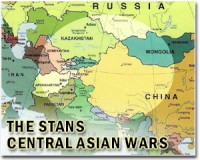| . |  |
. |
London (UPI) Jul 20, 2009 A new strategic study has spotlighted different approaches adopted by British and U.S. forces in Iraq and Afghanistan to confront armed opponents and the tensions created over the differences, publishers for the Kingston University-led research said Monday. "Hearts and Minds? British Counterinsurgency from Malaya to Iraq," a special issue of the Journal of Strategic Studies, said the different approaches favored by British and U.S. commanders in Iraq had become a "hot topic" because the military allies looked at ways of combating insurgents from divergent perspectives. The journal is published in Abingdon, Oxfordshire, England. Paul Dixon, editor and lead author of the study, said the British military advocated a "hearts and minds" model for confronting opposition in both Iraq and Afghanistan, citing what it saw as Britain's relative success in Northern Ireland and before that in the Malayan revolt. Integral to that approach, said the study, was a less coercive approach to foes than that supported by the U.S. military. Analysts told UPI the differences cited in the study might now be less relevant in Iraq than before because of reduced British military involvement in the country. Dixon said the different approaches created tensions between the two military sides in Iraq and Afghanistan and led to occasional public outbursts. A year after coalition forces intervened in Iraq in 2003, Gen. Mike Jackson, the British chief of staff at that time, famously distanced himself from the U.S. approach, saying, "We must be able to fight with the Americans. That does not mean we must be able to fight as the Americans." Dixon said British advocacy of the "hearts and minds" approach might have influenced Gen. David H. Petraeus, the commanding general of Multi-National Force-Iraq, while he developed the U.S. Army and Marine Corps Counterinsurgency Field Manual 2006. The manual marked a shift away from the U.S. conventional military approach, but not for long. Later U.S. commanders became more critical of the British approach to counterinsurgency in both Afghanistan and Iraq. By 2007, the study said, "a minor crisis in Anglo-American military relations" was said to be brewing and was picked up in the British media. Sir Jock Stirrup, the U.K. chief of the Defense Staff, admitted in media reports that Britain had become "too complacent" and "smug" about what it saw as its achievements in Northern Ireland and Bosnia-Herzegovina during the Yugoslav conflict in the early 1990s. The phrase "hearts and minds" was first used in Britain's counterinsurgency operations in Malaya, present-day Malaysia, between 1948 and 1960, and referred to a minimum use of force to win the hearts and minds of the population. However, the study said, Britain's Malayan campaign went way beyond a "hearts and minds" campaign and was highly coercive. "The British approach in Malaya did involve high levels of force, was not fought within the law and led to abuses of human rights. Britain's counterinsurgency campaign in Northern Ireland did not deploy the same levels of coercion that were used in Malaya but, nevertheless, considerable levels of coercion were used which did not succeed in winning the hearts and minds of the local people," said the study. It said the various interpretations of "hearts and minds" led to confusion about what degree of consent could be expected from the people and the implication of this for the use of force. The study said the British military had been generally more "political" and less coercive in its approach to counterinsurgency in Afghanistan and Iraq than the more conventional U.S. approach to counterinsurgency. The British approach to counterinsurgency has influenced the recent development of U.S. counterinsurgency doctrine, said the study, citing Petraeus and others. But there are still considerable differences in the British and U.S. approaches to counterinsurgency, and that has led to severe tensions in the relationship between these allies, according to the study. The study concluded the "hearts and minds" description of the British approach to counterinsurgency might soften its public image, but it was not an effective guide to operations, because it could be interpreted in such divergent ways. A better future approach might be to carefully specify contexts and circumstances that could justify deployment of force, said the study. Share This Article With Planet Earth
Related Links News From Across The Stans
 US Army to add 22,000 troops temporarily
US Army to add 22,000 troops temporarilyWashington (AFP) July 20, 2009 The US Army is to boost its ranks temporarily by up to 22,000 troops to ease the strain of deployments to Iraq and Afghanistan, Defense Secretary Robert Gates announced Monday. "Much has changed over the last two years, causing us to reassess whether we are properly sized to support current operational needs," Gates said, adding that the army would swell to 569,000 soldiers, up from the ... read more |
|
| The content herein, unless otherwise known to be public domain, are Copyright 1995-2009 - SpaceDaily. AFP and UPI Wire Stories are copyright Agence France-Presse and United Press International. ESA Portal Reports are copyright European Space Agency. All NASA sourced material is public domain. Additional copyrights may apply in whole or part to other bona fide parties. Advertising does not imply endorsement,agreement or approval of any opinions, statements or information provided by SpaceDaily on any Web page published or hosted by SpaceDaily. Privacy Statement |